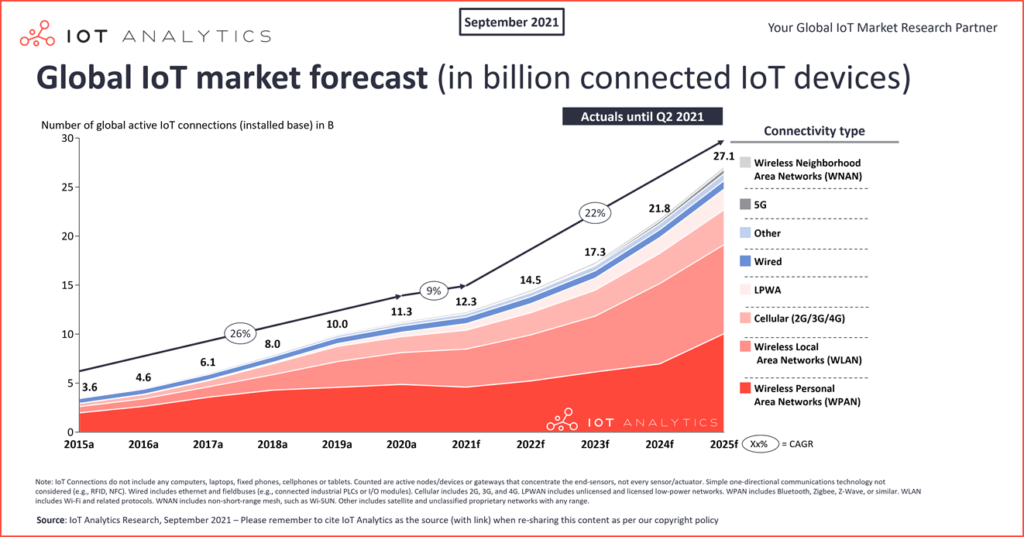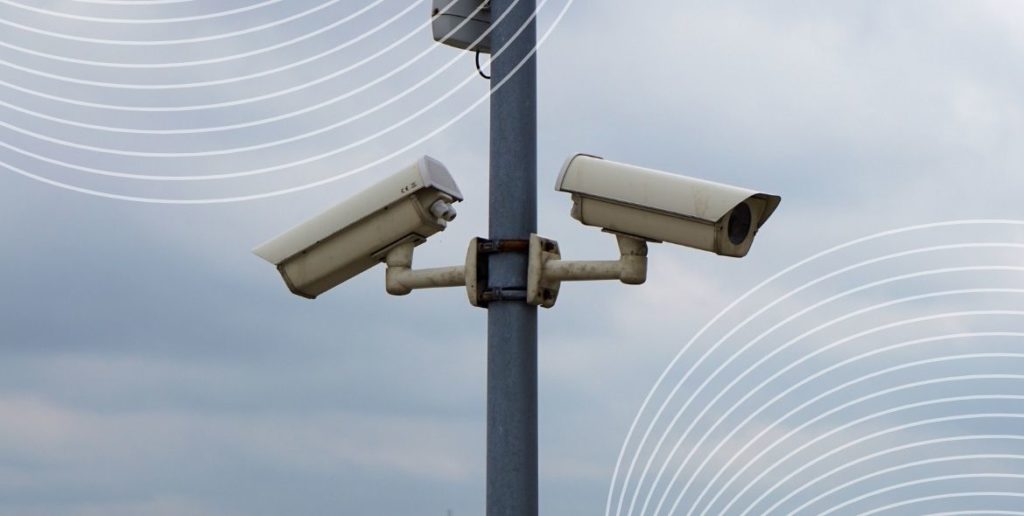IoT in telecoms: the challenges and the opportunities
Despite chip shortages and supply chain issues, there were more than 10 billion active IoT devices in 2021, with the number growing to 27 billion devices by 2025.
No matter what type of telecoms service provider you are, the odds are that your business has been dramatically influenced by this exponential growth. Business has grown dramatically. IoT market size, including software, solutions, networks, security, devices and services, stood at $ 157 billion in 2021, to grow to $ 525 billion by 2027.
A rising tide floats all ships, goes the adage. Mobile network operators and other national and international capacity providers, formerly facing commoditisation and stagnating average revenue per user (ARPU) have experienced unprecedented increases in bandwidth demand. This has been triggered by a step-change in revenues and profitability from the enterprise segment. An entire ecosystem of device and equipment manufacturers, service providers, software solutions, and more, are beneficiaries of this trend.

However, players at all stages of the ecosystem have faced several challenges in the rush to win the IoT race. Here are three of the key issues, discussed at a very high level.
Heterogenous ecosystems
One of the main issues is the heterogenous nature of this ecosystem. From capacity to security to analytics, providers used to subscribers demanding bigger and faster data connections, have faced unexpected pressures. They have all had to innovate to develop solutions to ensure QoE and security for a wide range of connected devices. For example, analytics providers have had to develop new solutions to measure Quality of Experience for a range of devices from bandwidth-hungry CCTVs to low-intensity smart meters.
Security
Forget botnets and ransomware, which can only affect your computer. In this all-connected world, every device connected to a network is a potential entry point for attackers. Security cameras, for instance, are among the most vulnerable home IoT devices, are the one item most hacked by cybercriminals. But there are many other ‘open windows’: the average US household has around 17 smart devices, and the average European home has 14. Enterprises, networks and even consumers are understandably concerned about the integrity of their data, devices and properties. And going back to our previous point, the mind-boggling array of devices and players in the ecosystem create newer attack vectors every day. Guaranteeing their own and customers’ security has long been a stumbling block for IoT revenue growth.
Monetisation
The ultimate driver of success for any disruptive technology is monetisation. From carmakers to system integrators to platform providers, the main question is how to generate profitable, sustainable revenue streams from this technology. It’s been a question that connectivity and infrastructure providers, such as telcos and mobile operators, have been grappling with for a number of years. Technologies that facilitate IoT in particular, such as 5G, require significant upfront investment in licensing and infrastructure from mobile operators. They need to ensure that they can monetise these huge amounts of IoT data traffic better, and in a more granular manner. Their business models need to ensure that complexities such as permanent inbound roaming devices don’t lead to lost opportunities.
How can marketing help?
Given the multitude of issues, players, and customers, the IoT space is noisy and crowded from a share of voice perspectives. How can content marketing play a role in differentiating and driving leads?
IoT audiences are unlike any other telecoms audience: they often are not interested in telecom technicalities, seeing a network as an enabler for their product or solution, rather than an item of infrastructure. Through our work with several players in different parts of the IoT ecosystem from networks to platforms, we have learnt that it pays enormous dividends to have the right content strategy in place for different audience segments. And setting out a strategy need not be as daunting as it sounds: read this blog for a handy step-by-step approach on how to set a content strategy for your business.
Strategy apart, the most effective approach in our experience is to engage with value-adding content that meaningfully addresses the real pain points of prospects. Avoid jargon or complexities, especially in the early stages of the purchase journey. For some expert insights on writing simple content for complex technologies, listen to this podcast. This customised model is the best way to drive sales enablement so that leads can be acquired quickly and reliably, and importantly, at scale.
If you would like to discuss how Isoline can help in developing and implementing a content marketing campaign that will help you in achieving this, drop us a line: hello@isolinecomms.com.



